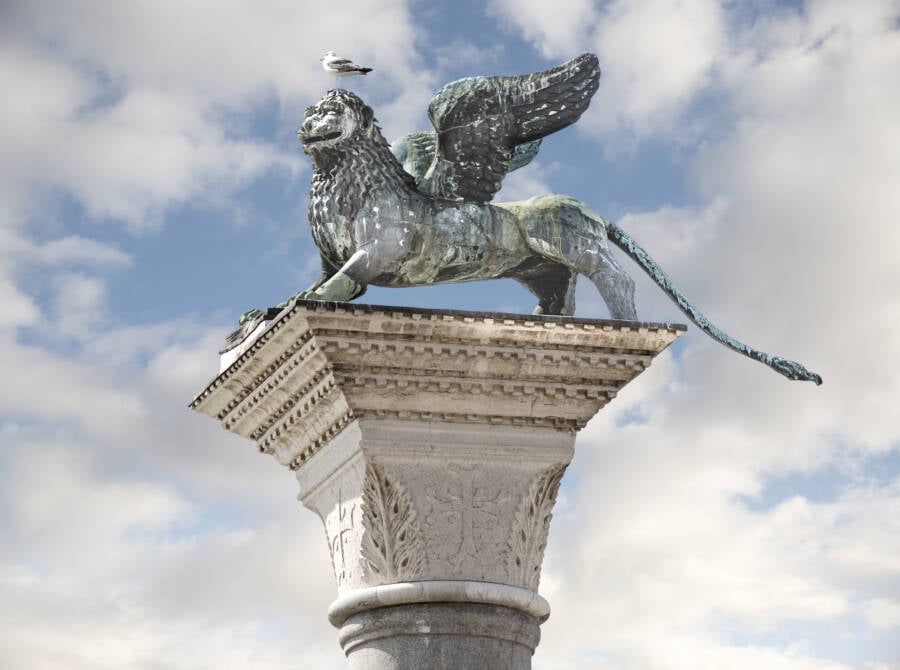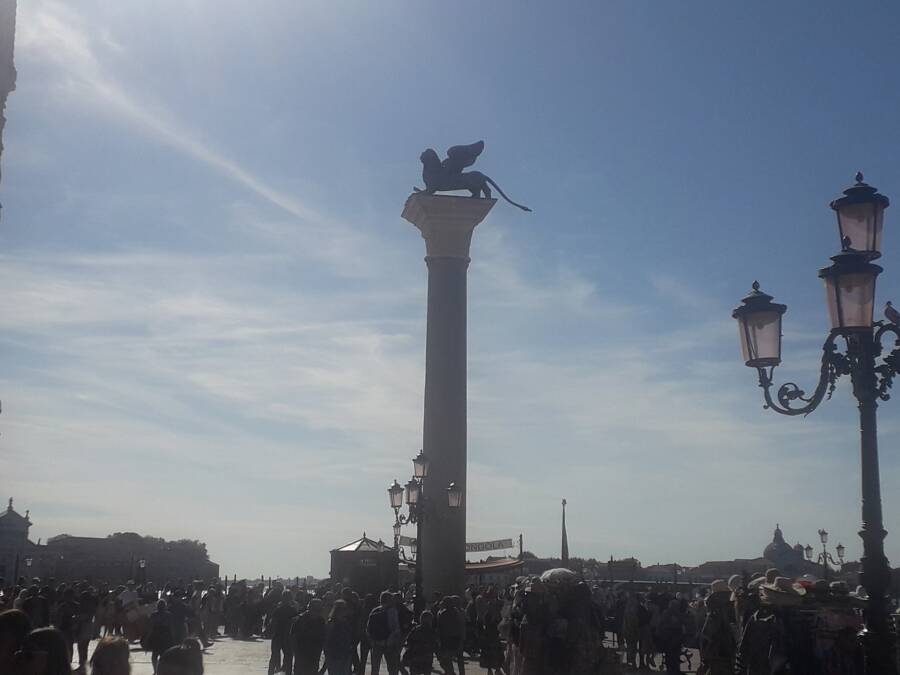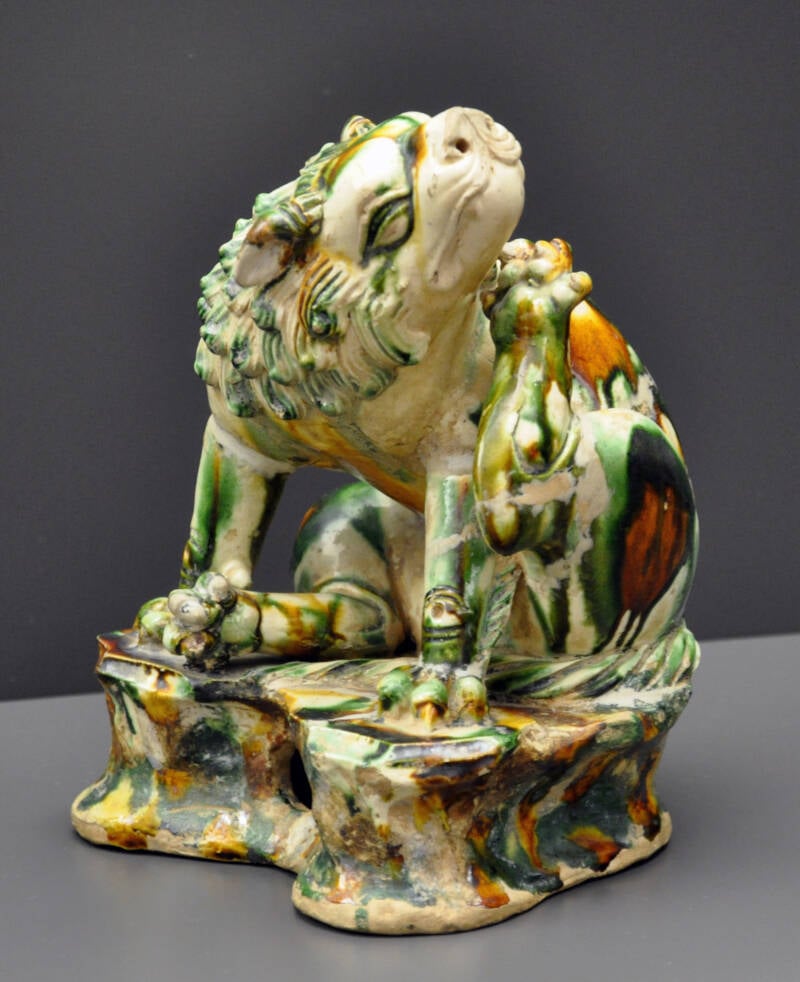New chemical analysis of the Lion of Venice's bronze alloy has just found that it originated in China and was built with copper sourced from mines in the lower Yangtze River basin during the Tang dynasty of 618 to 907 C.E.

Didier Descouens/Wikimedia CommonsThe Lion of Venice has come to symbolize the Italian city, but its origins have long been mysterious.
For centuries, the Lion of Venice has loomed over the Italian city as one of its most famous landmarks. It was long thought that the iconic sculpture originated in Anatolia, but a recent study suggests that the lion came from even farther away: China.
Not only that, but researchers believe that the statue may have a connection to the famous Venetian explorer, Marco Polo.
The Possible Chinese Origins Of The Lion Of Venice
According to a statement from the University of Padua, a team of geologists, chemists, archaeologists, and art historians from the university — alongside the International Association of Mediterranean and Eastern Studies and Ca’ Foscari University of Venice — carried out a study on the Lion of Venice to better understand its origins. Though a 1980 study suggested the sculpture came from Anatolia, this one suggested that it actually originated in China.

PatriaDeTodos/Wikimedia CommonsThe Lion of Venice as seen atop its column. The statue has been in the city for centuries, but its origins were unclear.
After studying the statue’s lead isotopes, the researchers determined that it was made of bronze which could be traced to copper mines in China, specifically from the lower Yangtze River basin in the southern part of the country. What’s more, the Lion of Venice statue is stylistically similar to zhènmùshòu, or “tomb guardians” that were cast in China during the Tang Dynasty (618 to 907 C.E.) and erected outside of burial chambers.
These “tomb guardians” were meant to deter grave robbers and give prestige to the dead. They were sometimes fantastical beasts and there’s evidence that the Lion of Venice itself once had horns or antlers. These were seemingly removed to make it seem more like a lion and less like a creature of fantasy, though it still has wings.

Andreas Praefcke/Wikimedia CommonsA colorful lion tomb guardian from the Tang Dynasty.
The researchers’ discovery was announced at the opening of the international conference on Marco Polo on September 11, 2024, which took place during celebrations marking the 700th anniversary of the Venetian traveler’s death. Indeed, researchers suspect that there is a link — albeit a tenuous one — between the Lion of Venice and one of the city’s most famous sons.
The Lion Of Venice’s Connection To Marco Polo
Born in Venice around 1254, Marco Polo was a merchant, adventurer, and traveler. He spent decades traveling the world, as captured by the famous travelogue Travels of Marco Polo. And of those years he spent abroad, Marco Polo spent 17 years in China.

Public DomainA mosaic of Marco Polo from the Palazzo Doria-Tursi in Genoa, Italy.
Though the Lion of Venice was already erected in the city by the time Marco Polo returned in 1295, researchers suspect that the sculpture has ties to his family. His father Nicolò and his uncle Maffeo were travelers as well, and between 1264 and 1266 they spent time at the Mongolian court in Beijing.
“[T]he circumstances of [the Lion of Venice’s] arrival – probably in pieces – remain mysterious, but may have had to do with the first journey of his father Nicolò and his uncle Maffeo,” the university press release noted.
But though the study of the Lion of Venice offers some clues about its origin — and its deeper ties to the city’s history — researchers acknowledged that there’s still much that we don’t know about the famous statue.
“If the enigmatic statue will continue to conceal some of its secrets, today, in a new light, it tells a previously unknown episode of the great Silk Road,” the researchers wrote, “which for millennia united the peoples of eastern Eurasia to the Adriatic Sea.”
After reading about the new study conducted on the Lion of Venice, discover the countless adventures of the 14th-century explorer Ibn Battuta. Then, discover the stories of some other famous explorers whose travels changed the world.





